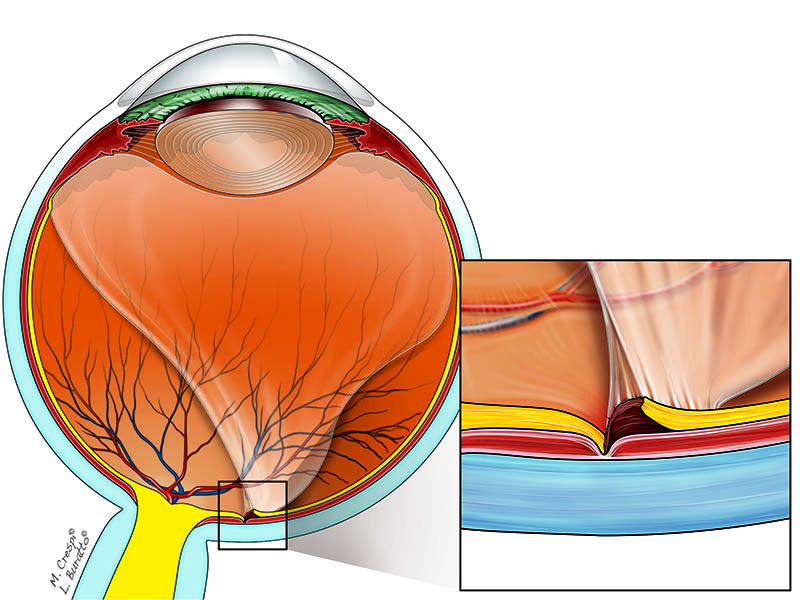Macular hole (foramen)
A Macular Hole (or foramen) is a small rupture that appears in the central part of the retina, called the macula.
It affects the very center of the macula, known as the fovea, and consequently alters its function. This is an acute phenomenon and in the majority of cases, is of sudden onset.
Symptoms of macular hole
The patient will perceive a small central spot and will find it impossible to see in detail what s/he is looking at.
In addition to the hole, frequently and possibly as a reaction to its appearance, a membrane will form on the retinal surface that to all intents and purposes is identical to a macular pucker. The shrinkage or contraction of this membrane will contribute to keeping the macular hole open.
Therapy for macular hole
Vitrectomy is the only option for resolving the problem of the macular hole.
Then, to allow the hole to close, it is necessary to keep the surrounding retina dry by filling the eye with gas. In order to maintain the contact between the gas and the foramen, the patient must lie face down for at least eight (not necessarily consecutive) hours each day.
Results
A technically-successful procedure and the correct post-operative position of the patient will guarantee a positive outcome in 90-95% of cases. However, this applies to small holes, and fortunately these are observed in the majority of cases. For holes of diameter in excess of 400-450 microns, the success rate lies at about 60-75%, depending on the population. .
How is success defined?
Success is defined as the closure of the hole. The healing process of a macular hole is a very slow process. In reference to the sight capacity, recovery can be extremely variable, from just a few tenths up to the possibility of restoring the original 10/10 level.



